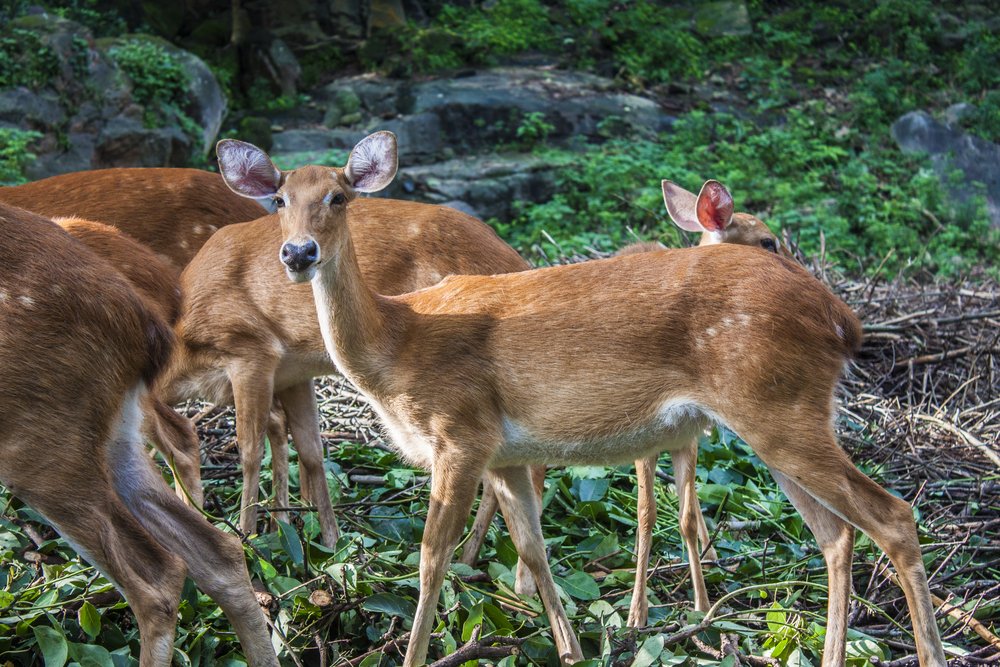Report by Shuchi Giridhar
Whether it is the majestic lion or a cute little bunny, creatures of the animal kingdom are loved by almost everyone. They are fascinating with the different habitats, diets, and features.
Some of them are endangered. One among them is the majestic Sangai deer.
They are found only in India, which is one of the reasons they are so special. Come on, let us learn more about this beautiful species of deer!

What is the Sangai Deer?
An endemic and endangered sub-species of Eld’s deer, the Sangai deer can only be found in Manipur, India. The Sangai deer’s English name is the Manipur Brow Antlered deer. T
he scientific name of this species is Rucervus eldii eldii. It is also called dancing deer.
Characteristics

The Sangai deer has a very long brow line. It has uniquely distinctive antlers which can reach up to a height of 1 m or 100 cm. It was named the brow antlered deer because, the forward protruding beam of the antlers come out from its brow tine.
It is a medium sized deer. The female sangai deer is about 90-100cm in height, and the males are 115-130cm in height.
A male sangai deer weighs 90-125kg and a female weighs 60-80 kg.
Its dark reddish brown winter coat progressively gets lighter towards the summer. It has an undefined rump patch and a short tail. The female sangai deer can reproduce all year.
Habitat

The Sangai deer are only found in Keibul Lamjao National Park in Manipur. They are the state animal of Manipur.
In the park, they are mostly found on floating biomasses of land in Loktak Lake. These biomases are called ‘phumdi‘ by the locals. They take up 20 to 15 km of the park’s area which is 40 km. LokTak lake is the largest freshwater lake in eastern India.
The most important part of the Sangai deer’s habitat are the Phumdi.
The thickness of the phumdi varies from 1 or 2 cm to 2m. They are made up of soil and floating masses of vegetation. The phumdi are formed by the accumulation of soil, debris, and vegetation. ⅘ of these floating bio masses are underwater.
Endangered
The Sangai deer are on the Schedule-1 of Wildlife (Protection) Act, 1972.
They are also on the IUCN Red List.
By1950, they were thought to be extinct, but in 1953, six of them were spotted. Then, the Manipur government worked and protected this species of deer and brought their numbers up to 200.
This documentary by the National park explains this massive conservation effort.
There are many reasons for the current conservation status of the species. Some of the main ones are-
• The Sangai deer are in danger of losing their habitat phumdi. The decrease of phumdi is due to floods and inundation. The area of phumdi has decreased from 31.60 kms in 1993 to 23.72 kms in 2010. Some other reasons for the decrease of phumdi are the degrading water quality due to pollution, stoppage of nutrient supply, and the invasion of foreign plants.
• Poaching is another important threat.
• Inbreeding, depression, and disease from other livestock are two other reasons for endangerment
Why are they called dancing deer?
The Sangai deer are not actually dancing but from a distance it looks like they are.
When the hooves of the deer touch the ground, they sink into the soft and spongy land of the Phumdi. This from a distance looks like dance, leading to their nickname.
Their mincing hops over the floating foliage add to the effect.
Specialty of the Sangai
•According to a popular folk legend, these deer are considered as the connecting soul between humans and nature.
• Every year a ten-day festival from November 21st to November 30th is celebrated. It is called the Sangai festival
Image Credit- ENVIS center, Manipur

